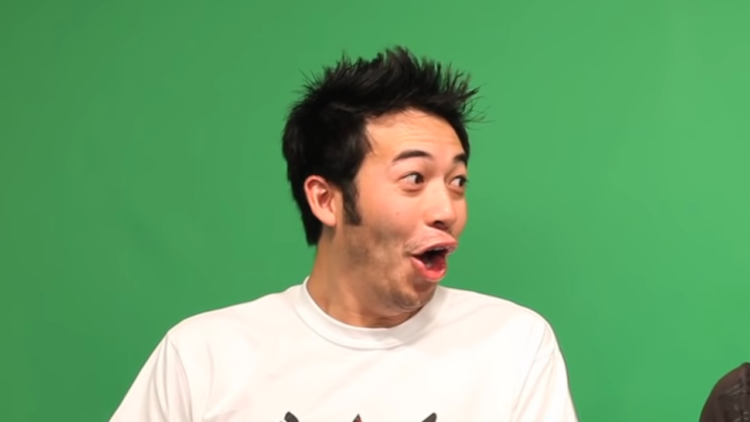of online communication. Initially rooted in the world of Twitch and gaming, it has since permeated various social media platforms, becoming synonymous with excitement, celebration, and genuine surprise. This article delves into the history, significance, and impact of “PogChamp,” examining how a simple emote evolved into a symbol of online culture.
The Origins of “PogChamp”
To understand “PogChamp,” we must first look at its roots in the Twitch streaming platform. The term is derived from a specific emote featuring the face of Ryan “Gootecks” Gutierrez, a well-known fighting game player and commentator. The emote was introduced to Twitch in 2012 and quickly gained popularity, often used to express enthusiasm or excitement during live streams.
Gootecks initially made the face while reacting to an impressive play during a game of Street Fighter. The expression captured the essence of surprise and exhilaration, making it an ideal representation of the thrill of gaming. As Twitch grew, so did the use of “PogChamp,” becoming one of the most recognizable emotes in the Twitch community.
The Meaning Behind “PogChamp”
The word “PogChamp” itself is a blend of “Pog,” which is a term derived from a game called “Pogs” that was popular in the 1990s, and “champ,” short for “champion.” In the gaming context, it signifies a moment of triumph, excitement, or skillful gameplay. When viewers use “PogChamp” in chat during a stream, they are essentially expressing their approval or admiration for what they have witnessed.
As Twitch streams became more interactive, emotes like “PogChamp” allowed viewers to communicate their reactions in real-time. This instant form of expression became integral to the viewing experience, fostering a sense of community and engagement among users.
The Rise of “PogChamp” in Popular Culture
As Twitch gained traction, “PogChamp” began to spill over into other areas of online culture. Memes, social media posts, and even YouTube videos started incorporating the emote as a way to convey excitement or highlight moments of triumph in various contexts. This cross-platform usage contributed to the emote’s widespread recognition beyond the gaming community.
The term “Pog” also began to take on a life of its own. It became a shorthand for excitement, often used in comments or replies to denote enthusiasm. This evolution highlights how online language and culture are fluid, adapting to the needs of users and the contexts in which they communicate.
The Controversy Surrounding “PogChamp”
In early 2021, the popularity of “PogChamp” faced a significant challenge when Gootecks made controversial statements related to the Capitol riots in the United States. As a result, Twitch decided to remove the “PogChamp” emote from their platform, sparking outrage and disappointment among fans who had come to love the emote.
Twitch’s decision prompted a conversation about the accountability of public figures and the consequences of their actions. The removal of “PogChamp” also led to the creation of a new version of the emote, featuring various other expressions of excitement. This change reflected Twitch’s commitment to fostering a positive and inclusive environment for its users.
The Impact of “PogChamp” on Online Gaming Communities
Despite the controversy, “PogChamp” remains a significant part of online gaming culture. Its ability to convey emotion and foster engagement has made it a valuable tool for streamers and viewers alike. The use of emotes like “PogChamp” encourages interaction, allowing viewers to feel more connected to the streamers they follow.
Moreover, “PogChamp” has inspired a sense of belonging within the gaming community. It serves as a symbol of shared experiences, where gamers can come together to celebrate achievements, laugh at fails, and support one another. This communal aspect is crucial to the appeal of online gaming, where social interaction enhances the overall experience.
“PogChamp” and the Evolution of Online Communication
The rise of “PogChamp” highlights the broader evolution of online communication. In a digital landscape characterized by brevity and immediacy, emotes and memes have become essential forms of expression. They allow users to convey complex emotions and reactions in a simple, visual format, making communication more engaging and relatable.
This trend can be seen across various platforms, from Twitter to TikTok, where users leverage memes and emotes to share their thoughts and feelings. “PogChamp” is a prime example of how a single emote can encapsulate excitement and joy, becoming a universal language among online communities.
The Future of “PogChamp”
As online culture continues to evolve, so too will the significance of “PogChamp.” The emote has already undergone transformations, adapting to the changing landscape of social media and gaming. Future iterations of “PogChamp” may emerge, reflecting the ongoing evolution of online communication.
Moreover, the legacy of “PogChamp” is likely to endure as new generations of gamers and streamers discover its history and meaning. The emote’s ability to encapsulate excitement and engagement will ensure its place in the lexicon of online culture.
Conclusion
“PogChamp” is more than just an emote; it represents the evolution of communication in the digital age. From its humble beginnings in the Twitch community to its widespread recognition across social media, “PogChamp” has become a symbol of excitement, celebration, and camaraderie among gamers. Despite facing challenges and controversies, it remains a beloved part of online culture, showcasing the power of shared experiences in bringing people together. As we look to the future, “PogChamp” will undoubtedly continue to adapt and evolve, leaving an indelible mark on the landscape of online communication.





